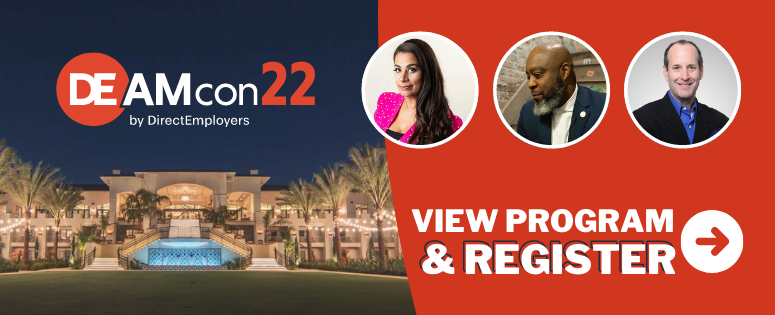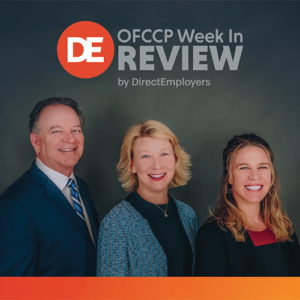
- The Final, Final, This Time We Mean It Deadline For EEO-1 Survey is November 15th
- New Guidance for Federal Government Contractors on Vaccine Mandate Continues to Stretch Its Reach
- NLRB Back On Average With $56 Million Collected in Fiscal Year 2021
- Watch The 2021 HIRE Vets Medallion Award Ceremony!
- It’s National Native American Heritage Month!
- The White House Issued a Press Release Relaxing the December 8, 2021 Employee Vaccination or Termination “Requirement” Applicable to Federal Contractors and Subcontractors to January 4, 2022
- OSHA Emergency Temporary Standard Mandating COVID-19 Vaccines or Testing/Masks Catches Federal Contractors in a Bind by Exempting Them from the More Generous Exceptions to the OSHA ETS
- DEAMcon22 Agenda is Here!! Pack Your Bags For Carlsbad, California!
- Comment Now on the Continuation of Videoconferencing In NLRB Hearings
- Monthly Job Growth For October Currently Slightly Below Yearly Average
- Centers for Medicare & Medicaid Jumped into the Vaccine Mandate Action with its Own Interim Final Rule Covering 17 Million Medicare/Medicaid Provider Employees
- It Took Less Than 24 Hours: U.S. Fifth Circuit Strikes Down OSHA ETS Citing “grave statutory and constitutional issues”
- OFCCP Published its Draft Proposal to Rescind the Trump OFCCP Religious Exemption Rule, and Not Replace It
Monday, November 1, 2021: The Final, Final, This Time We Mean It Deadline For EEO-1 Survey is November 15th

“If you still have not filed your 2019 and/or 2020 EEO-1 Component 1 Report(s), please do so no later than Monday, November 15, 2021, in order to comply with the EEOC’s mandatory filing requirements. Once the November 15, 2021 deadline passes, NO additional 2019 or 2020 EEO-1 Component Reports will be accepted.
If you have already requested assistance from the Filer Support Help Desk and have a pending help desk ticket, we are in the process of addressing those requests and will ensure that you are able to file. We ask that filers only contact the EEO-1 Component 1 Help Desk once regarding the same issue.”
WHAT HAPPENS BAD TO THOSE EMPLOYERS WHICH FILE, OR ATTEMPT TO FILE AFTER THE EEOC CLOSES THE PORTAL? Answer: Nothing.
Monday, November 1, 2021: New Guidance for Federal Government Contractors on Vaccine Mandate Continues to Stretch Its Reach
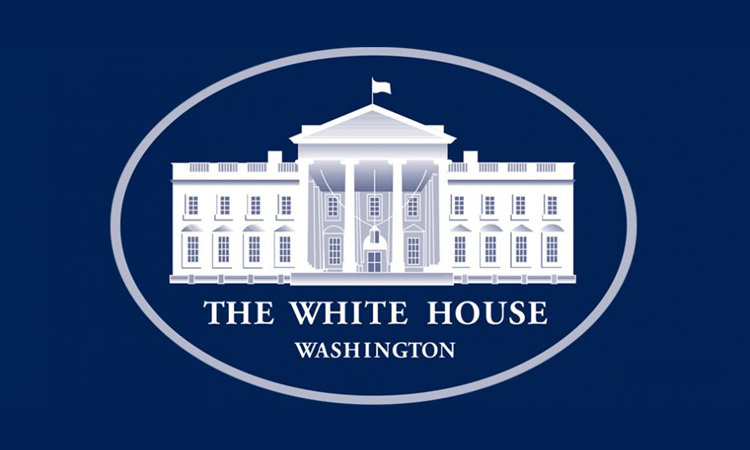
Vaccination and Safety Protocols
Q: If a covered contractor can access a covered contractor employee’s vaccination documentation, consistent with relevant privacy laws, does the covered contractor need to require the employee to show or provide documentation?
A: No…
Q: Do all requests for accommodation need to be resolved by the covered contractor by the time that covered contractor’s employees begin work on a covered contract or at a covered workplace?
A: No… [But see the OSHA Emergency Temporary Standard for a different answer]
Q: When a covered contractor employee is not vaccinated because a covered contractor has provided the employee with an accommodation, what workplace safety protocols must the employee follow while in a Federal workplace?
A: The Federal agency will determine the workplace safety protocols that individuals who are not fully vaccinated must follow while in a Federal workplace…[But see the OSHA Emergency Temporary Standard for a different answer]
Scope and Applicability of Task Force Guidance for Federal Contractors
Q: If a corporate affiliate of a covered contractor does not otherwise qualify as a covered contractor, are the employees of that affiliate considered covered contractor employees subject to COVID-19 workplace safety protocols for Federal contractors established through Task Force Guidance? (Full answer provided below)
A: For purposes of Task Force Guidance, business concerns, organizations, or individuals are affiliates of each other if, directly or indirectly: (i) either one controls or has the power to control the other; or (ii) a third party controls or has the power to control both.
Indicia of control include, but are not limited to, interlocking management or ownership, identity of interests among family members, shared facilities and equipment, or common use of employees.
An employee of a corporate affiliate of a covered contractor is considered a covered contractor employee if the employee performs work at a covered contractor workplace. (emphasis added)
Q: If the workplace where a covered contractor’s employees perform work on or in connection with a covered contract is a location owned, leased, or otherwise controlled by a corporate affiliate of a covered contractor that does not otherwise qualify as a covered contractor under Task Force guidance, is the workplace considered a covered contractor workplace?
A: (Same as above with the following):
If any employee of a covered contractor working on or in connection with a covered contract is likely to be present during the period of performance for a covered contract at a workplace controlled by a corporate affiliate of that covered contractor, that workplace is considered a covered contractor workplace. (emphasis added)
Compliance
Q: What steps should a covered contractor take if a covered contractor employee refuses to be vaccinated?
A: A covered contractor should determine the appropriate means of enforcement… [But see the OSHA Emergency Temporary Standard for a different answer]
Q: What steps should a [federal contracting] agency take if a covered contractor does not comply with the requirements in the Task Force’s Guidance for Federal Contractors and Subcontractors?
A: … Where covered contractors are working in good faith and encounter challenges with compliance with COVID-19 workplace safety protocols, the [federal] agency contracting officer should work with them [the contractors] to address these challenges. If a covered contractor is not taking steps to comply, significant actions, such as termination of the contract, should be taken.
How We Got Here
- September 30, 2021: FAR Council Required Two Clauses to Be Embedded in Federal Contracts Seeking to “Require” Compliance with Any and All Task Force “Guidances” Re COVID-19 Vaccinations or Testing
- September 24, 2021: By Executive Fiat, White House Task Force Suddenly Extended a COVID-19 Vaccine Mandate to Include ALL Employees of Federal Contractors and Subcontractors.”
We twice discussed this controversial Executive Order in our September 13, 2021, Week In Review:
Monday, November 1, 2021: NLRB Back On Average With $56 Million Collected in Fiscal Year 2021
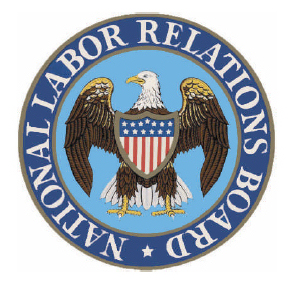
In addition, the Board offered job reinstatements to 6,307 individuals, a massive increase from the 978 individuals in FY2020.
Flashback
Last year, under the Case Expediting Program (begun in September 2018), the Board’s focus was issuing decisions in the oldest pending cases. As a result, the Agency reduced the median age of pending cases from 157 days to 85 days, a 46% reduction.
Monday, November 1, 2021: Watch The 2021 HIRE Vets Medallion Award Ceremony!
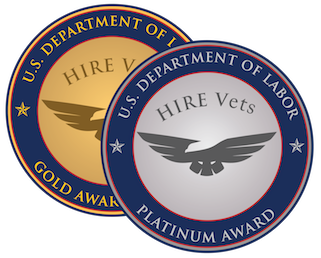
Wednesday, November 10, 2021
1:00 pm EST
Virtual online at HireVets.gov
Thursday, November 4, 2021: It’s National Native American Heritage Month!
The Office of Federal Contract Compliance Programs (OFCCP) released a bulletin spotlighting its support of National Native American Heritage Month.
In addition to its Indian and Native American Employment Rights Program, the Agency supports the inclusion of Native Americans by:
- encouraging federal Government Contractors working on or near Indian reservations to implement Indian Preference in employment to American Indians and Alaska Natives;
- focusing on outreach and recruitment efforts between federal Government Contractors and Tribal Colleges and Universities (TCUs); and
- providing best practices for our stakeholders who work on or near Indian reservations.
See also President Biden’s Proclamation on National Native American Heritage Month.
Thursday, November 4, 2021: The White House Issued a Press Release Relaxing the December 8, 2021 Employee Vaccination or Termination “Requirement” Applicable to Federal Contractors and Subcontractors to January 4, 2022

This alteration to the deadline is intended to “make it easy for all employers to comply with the requirements” by setting a uniform deadline for a business’ employees. Thus, the same January 4, 2022 deadline for employees to be fully vaccinated applies regardless of whether an employer is a federal contractor, a private employer subject to the ETS, or a health care facility subject to the Centers for Medicare & Medicaid Services’ (“CMS”) rule requiring healthcare workers be fully vaccinated.
As readers may recall, we previously discussed the vaccination mandate for employees of federal contractors and subcontractors in prior WIRs. President Biden’s announcement as to federal contractor employee mandates was announced on September 9th (“President Biden Mandates COVID-19 Vaccine for Certain Federal Contractors: Exceptions as Interesting as Who is covered”). The Safer Federal Workforce Task Force initially issued FAQs related to vaccination for federal contractors on September 16th (“White House Safer Federal Workforce Task Force Greenlights Federal Executive Agencies to Impose Vaccination Mandates on Federal Contracts/Subcontracts Beyond Biden’s Federal Contractor Vaccination Mandate”), and issued the new guidance related to COVID-19 vaccination on September 24th (“By Executive Fiat, White House Task Force Suddenly Extended a COVID-19 Vaccine Mandate to Include ALL Employees of Federal Contractors and Subcontractors”). The Task Force subsequently issued new FAQs related to employee requests for accommodation under the guidance on October 21st (“New Vaccine FAQs for Federal Contractors”).
Thursday, November 4, 2021: OSHA Emergency Temporary Standard Mandating COVID-19 Vaccines or Testing/Masks Catches Federal Contractors in a Bind by Exempting Them from the More Generous Exceptions to the OSHA ETS
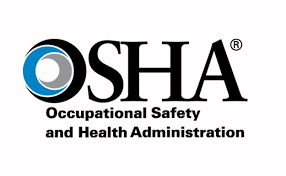
The ETS:
- mandates employers with 100 or more employees at any time the ETS is in effect (thus, even if an employer falls under 100 employees at some point, it must still comply with the ETS because of its prior employee count);
- requires COVID-19 vaccinations of employees, or at least weekly testing and wearing of face coverings for those not fully vaccinated;
- carves out individual exceptions for those employees who:
- work exclusively from home (remote work exception); and/or
- require a reasonable accommodation because unable to be vaccinated and/or wear a face covering due to a disability (recognized as such within the meaning of the ADA: underlying medical condition exception); and/or
- require a reasonable accommodation for their sincerely held religious belief, practice or observance (religious exception); and/or
- do not report to a workplace where other individuals are present (works alone exception); and/or
- work exclusively outdoors (outdoor work exception, in a nod to the construction and other type industries).
- carves out wholesale exceptions from the ETS for those employers which are otherwise covered under:
IMPORTANT: So, federal contractors and subcontractors (and health care employers) otherwise covered by the non-regulatory “Guidances”, “Fact Sheets”, “FAQs” and “Press Releases” the Safer Federal Workforce Task Force and The White House have issued may not avail themselves of the broader license to exempt employees from vaccine and masking mandates the OSHA ETS affords “employers” the ETS covers.
For example, numerous types of employees a federal contractor would be forced to be vaccinated or terminated from employment could remain employed under the OSHA ETS.
Accordingly, the architecture of President Biden’s COVID-19 Plan is currently this: An employer with 100 or more employees which is ALSO simultaneously a federal contractor/subcontractor covered by the purported “requirements” of the string of Safer Federal Workforce Task Force “Guidances”, “Fact Sheets”, “FAQs” and “Press Releases” would have to follow that string of obligations and NOT the OSHA ETS (or be allowed to avail itself or its employees of the ETS’s numerous “exceptions” to the ETS’ vaccination and testing/masking mandates not available to federal contractors and subcontractors).
This inconsistent and highly unusual differential approach to the protection of the safety and health of employees from the same workplace threat will become a centerpiece of evidence for those covered “employers” and states attacking the OSHA ETS, as well as those federal contractors/subcontractors and states attacking the vaccination or employee termination mandates of the Safer Federal Workforce Task Force seeking to implement President Biden’s Executive Order 14042 (born of the same September 9, 2021 “President Biden Covid-19 Action Plan”).
Additionally, employers should know the ETS does NOT carve out from the vaccine mandate those employees with “natural immunity” from a prior COVID-19 infection. The ETS went into effect on Friday November 5, 2021, when OSHA published it in the Federal Register and will remain in effect for six months (but see both the related story, below in this WIR, re the federal court injunction issued Saturday enjoining the OSHA ETS nationwide and also the delay dates of OSHA’s enforcement of its ETS discussed below in this story).
OSHA also now seeks public comment on the ETS and whether OSHA should adopt the ETS as a “Final” Rule which would be permanent in nature when the ETS times out in six-months (i.e., on Wednesday May 4, 2022). OSHA also seeks comment on whether employers with fewer than 100 employees should be subject to the ETS and/or any coming permanent Rule. (NOTE: OSHA’s jurisdiction bottoms at companies employing only ten employees and assuming those businesses affect inter-state commerce). OSHA will accept public comments on the ETS and these other open questions to and through midnight Monday December 6, 2021).
Gain additional insight on how this affects both employers and employees in today’s OFCCP Week In Review bonus blog feature.
Thank you to Jay J. Wang of Fox, Wang & Morgan for his contribution on this story.
Friday, November 5, 2021: DEAMcon22 Agenda is Here!! Pack Your Bags For Carlsbad, California!
The DirectEmployers Team, Members, and Guests will head to the beautiful San Diego coast of Carlsbad for the DirectEmployers 2022 Annual Meeting & Conference (DEAMcon22) April 20-22nd. The team is thrilled to announce that the agenda is live!
From start to finish, the program will inspire and empower you to reach higher levels in your career by offering a mix of fresh, thought-provoking content from subject matter experts and your peers.
The experts at DE have gone to great lengths to carefully curate a program with something for every focus and career level to ensure that all attendees receive the education they need and desire to succeed. Explore the three main focus areas of:
- OFCCP Compliance
- Recruitment
- Diversity & Inclusion
and then register to join the team at the five-star resort venue, the Park Hyatt Aviara Resort, Golf Club & Spa!
We can’t wait to see you there!
Friday, November 5, 2021: Comment Now on the Continuation of Videoconferencing In NLRB Hearings

- stakeholders’ experiences with remote hearings during the pandemic;
- the benefits or drawbacks of using videoconference technology to conduct remote hearings; and
- the need for potential amendments to the Board’s rules to incorporate videoconference technology to conduct remote hearings.
The Board’s current Rules and Regulations provide for taking a single witness’s testimony via video in an unfair labor practice proceeding upon a showing of good cause based on compelling circumstances. However, during the COVID-19 pandemic, the Board conducted most of its hearings remotely in unfair labor practice and representation cases. Once conditions permit, the Board intends to resume conducting hearings primarily in person. But, based on the Board’s experience during the pandemic, the Board is considering whether to retain virtual hearings as an option for future use in appropriate circumstances.
Comment before or on January 4, 2022.
Friday, November 5, 2021: Monthly Job Growth For October Currently Slightly Below Yearly Average
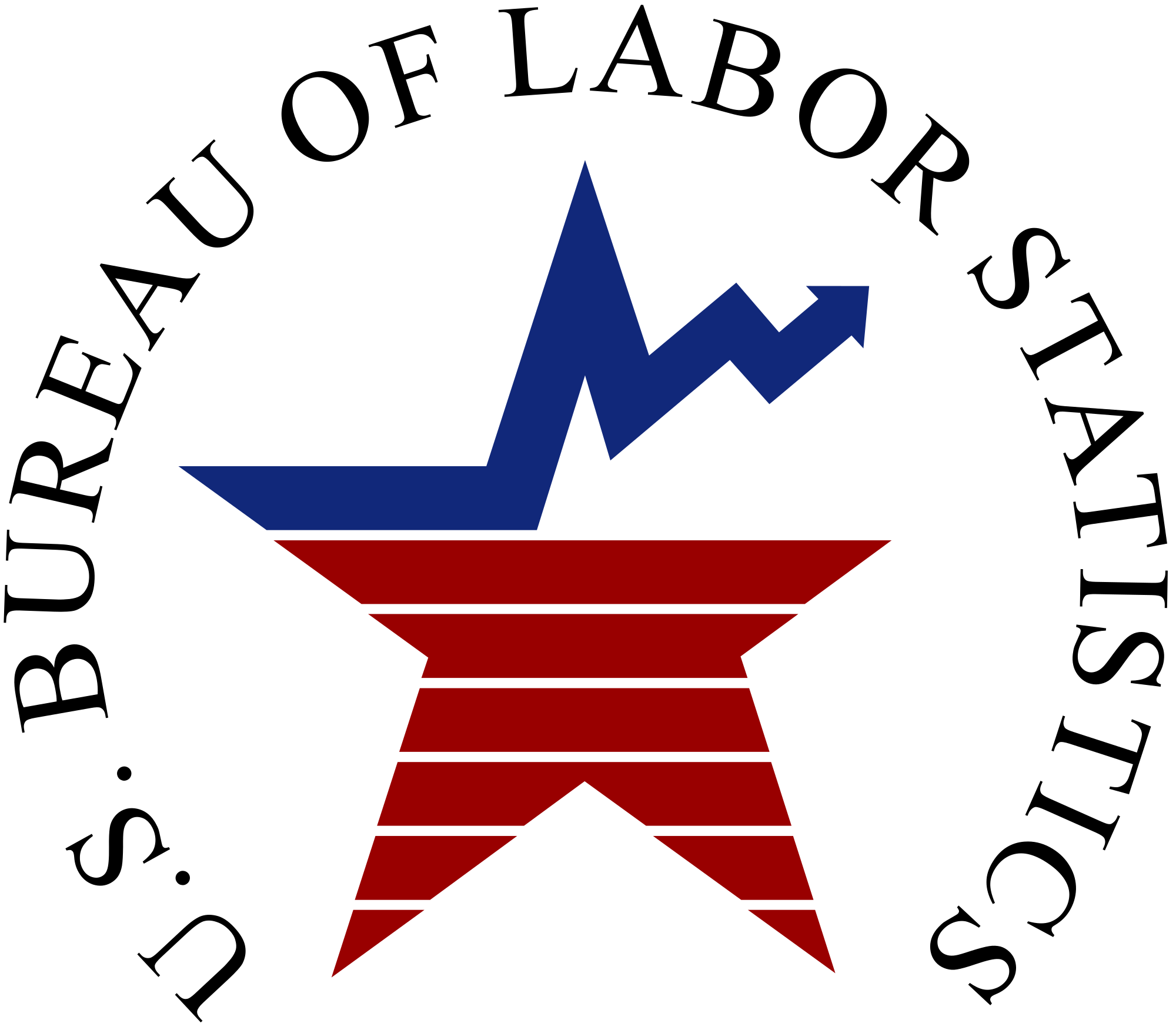
Job increases continued in leisure & hospitality (+164,000), professional & business services (+100,000), manufacturing (+60,000), and transportation & warehousing (+54,000).
Job decreases continued in public education.
| The Employment Situation – October 2021 | |||
|---|---|---|---|
| Unemployment Rate | Oct 2021 | Sept 2021 | Oct 2020 |
|
(Seasonally adjusted) |
4.6% | 4.8% | 6.9% |
|
(Seasonally adjusted) |
4.0% 7.9% 4.2% 5.9% 4.3% 4.4% |
4.2% 7.9% 4.2% 6.3% 4.7% 4.2% |
6.0% 10.8% 7.6% 8.8% 6.7% 6.5% |
|
(Not seasonally adjusted) |
3.9% | 3.6% | 5.5% |
|
(Not seasonally adjusted) |
9.1% | 9.0% | 11.1% |
Nonfarm Payroll Employment “New Jobs Added”
Monthly revisions result from additional reports from businesses and government agencies since the last published estimates and the recalculation of seasonal factors.
| Month | Original Report | 1st Month Adjustment | 2nd Month Adjustment |
| October 2021 | 531,000 | TBD | TBD |
| September 2021 | 194,000 | 312,000 | TBD |
| August 2021 | 235,000 | 366,000 | 483,000 |
See also President Biden’s remarks and U.S. Secretary of Labor Marty Walsh’s remarks.
Friday, November 5, 2021: Centers for Medicare & Medicaid Jumped into the Vaccine Mandate Action with its Own Interim Final Rule Covering 17 Million Medicare/Medicaid Provider Employees
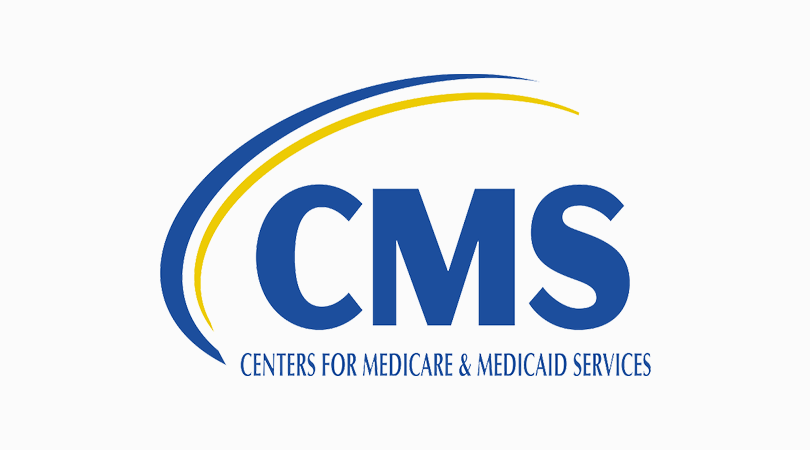
- Ambulatory Surgical Centers (ASCs) (§ 51)
- Hospices (§ 60)
- Psychiatric residential treatment facilities (PRTFs) (§ 151)
- Programs of All-Inclusive Care for the Elderly (PACE) (§ 74)
- Hospitals (acute care hospitals, psychiatric hospitals, hospital swing beds, long term care hospitals, children’s hospitals, transplant centers, cancer hospitals, and rehabilitation hospitals/inpatient rehabilitation facilities) (§ 42)
- Long Term Care (LTC) Facilities, including Skilled Nursing Facilities (SNFs) and Nursing Facilities (NFs), generally referred to as nursing homes (§ 80)
- Intermediate Care Facilities for Individuals with Intellectual Disabilities (ICFs-IID) (§ 430)
- Home Health Agencies (HHAs) (§ 70)
- Comprehensive Outpatient Rehabilitation Facilities (CORFs) (§§ 58 and 485.70)
- Critical Access Hospitals (CAHs) (§ 640)
- Clinics, rehabilitation agencies, and public health agencies as providers of outpatient physical therapy and speech-language pathology services (§ 725)
- Community Mental Health Centers (CMHCs) (§ 904)
- Home Infusion Therapy (HIT) suppliers (§ 525)
- Rural Health Clinics (RHCs)/Federally Qualified Health Centers (FQHCs) (§ 8)
- End-Stage Renal Disease (ESRD) Facilities (§ 30)
Major Substantive Requirements of the IFC:
- Covered “Staff” of the covered entities must be vaccinated before they may provide service (see implementation dates, below).
The CMS’s IFC provides an expansive definition of staff, while nonetheless providing an exception to mandatory vaccination for “[i]ndividuals who provide services 100 percent remotely.” This broad definition of staff demonstrates CMS’s concern to maximize protection of those working with each other but also for patients and visitors to patients:
“Each facility’s COVID-19 vaccination policies and procedures must apply to the following facility staff, regardless of clinical responsibility or patient contact and including all current staff as well as any new staff, who provide any care, treatment, or other services for the facility and/or its patients: Facility employees; licensed practitioners; students, trainees, and volunteers; and individuals who provide care, treatment, or other services for the facility and/or its patients, under contract or other arrangement. These requirements are not limited to those staff who perform their duties within a formal clinical setting, as many health care staff routinely care for patients and clients outside of such facilities, such as home health, home infusion therapy, hospice, PACE programs, and therapy staff. Further, there may be staff that primarily provide services remotely via telework that occasionally encounter fellow staff, such as in an administrative office or at an off-site staff meeting, who will themselves enter a health care facility or site of care for their job responsibilities. Thus, we believe it is necessary to require vaccination for all staff that interact with other staff, patients, residents, clients, or PACE program participants in any location, beyond those that physically enter facilities, clinics, homes, or other sites of care. Individuals who provide services 100 percent remotely, such as fully remote telehealth or payroll services, are not subject to the vaccination requirements of this IFC.”
- Like the OSHA ETS, but unlike the federal contractor/subcontractor vaccination mandate, the CMS IFC contains numerous exemptions from mandatory vaccination:
“…we recognize that there are some individuals who might be eligible for exemptions from the COVID-19 vaccination requirements in this IFC under existing Federal law. Accordingly, we require that providers and suppliers included in this IFC establish and implement a process by which staff may request an exemption from COVID-19 vaccination requirements based on an applicable Federal law. Certain allergies, recognized medical conditions, or religious beliefs, observances, or practices, may provide grounds for exemption. With regard to recognized clinical contradictions to receiving a COVID-19 vaccine, facilities should refer to the CDC informational document, Summary Document for Interim Clinical Considerations for Use of COVID-19 Vaccines Currently Authorized in the United States, accessed at https://www.cdc.gov/vaccines/covid-19/downloads/summary-interim-clinical-considerations.pdf.
- Unlike the OSHA ETS, here is the proof of vaccination CMS will accept:
- “CDC COVID-19 vaccination record card (or a legible photo of the card),
- Documentation of vaccination from a health care provider or electronic health record, or
- State immunization information system record.
- If vaccinated outside of the U.S., a reasonable equivalent of any of the previous examples would suffice.”
- Two Phase Implementation Dates:
“…to provide protection as soon as possible, we are establishing two implementation phases for this IFC. Phase 1, effective 30 days after publication, includes nearly all provisions of this IFC, including the requirements that all staff have received, at a minimum, the first dose of the primary series or a single dose COVID-19 vaccine, or requested and/or been granted a lawful exemption, prior to staff providing any care, treatment, or other services for the facility and/or its patients. Phase 1 also includes the requirements for facilities to have appropriate policies and procedures developed and implemented, and the requirement that all staff must have received a single dose COVID-19 vaccine or the initial dose of a primary series by December 6, 2021.
HOWEVER, on the day BEFORE the CMS published its IFC, the Biden White House called an “audible at the line” and issued a Press Release (no kidding) changing the deadline dates for the CMC ICF (along with those in the OSHA ETS and the federal contractor/subcontractor vaccination/termination mandate):
“…the Administration is announcing today that the deadline for workers to receive their shots will be the same for the OSHA rule, the CMS rule, and the previously-announced federal contractor vaccination requirement. Employees falling under the ETS, CMS, or federal contractor rules will need to have their final vaccination dose – either their second dose of Pfizer or Moderna, or single dose of Johnson & Johnson – by January 4, 2022.”
Phase 2, effective 60 days after publication, consists of the requirement that all applicable staff are fully vaccinated for COVID-19, except for those staff who have been granted exemptions from COVID-19 vaccination or those staff for whom COVID-19 vaccination must be temporarily delayed, as recommended by the CDC, due to clinical precautions and considerations. Although an individual is not considered fully vaccinated until 14 days (2 weeks) after the final dose, staff who have received the final dose of a primary vaccination series by the Phase 2 effective date are considered to have met the individual vaccination requirements, even if they have not yet completed the 14-day waiting period.”
The announcement of a relaxation of the CMC’s vaccination deadlines to January 4, 2022 (contained in the Biden White House Press Release) is apparently a nullity as to the Phase 2 deadline which already sets a January 4, 2022 deadline.
How the CMS Rule Interplays with the OSHA ETS?
Unlike the OSHA ETS and the vaccination or termination “Guidance/FAQs/Press Releases/Fact Sheets” applicable to federal Government contractors and subcontractors, the CMS Rule acknowledges that its Rule is different in requirement from the OSHA ETS (more legal fodder for opponents of all of the vaccine and mask mandates):
“Providers and suppliers may be covered by both the OSHA ETS and our interim final rule. Although the requirements and purpose of each regulation text are different, they are complementary.”
Saturday, November 6, 2021: It Took Less Than 24 Hours: U.S. Fifth Circuit Strikes Down OSHA ETS Citing “grave statutory and constitutional issues”
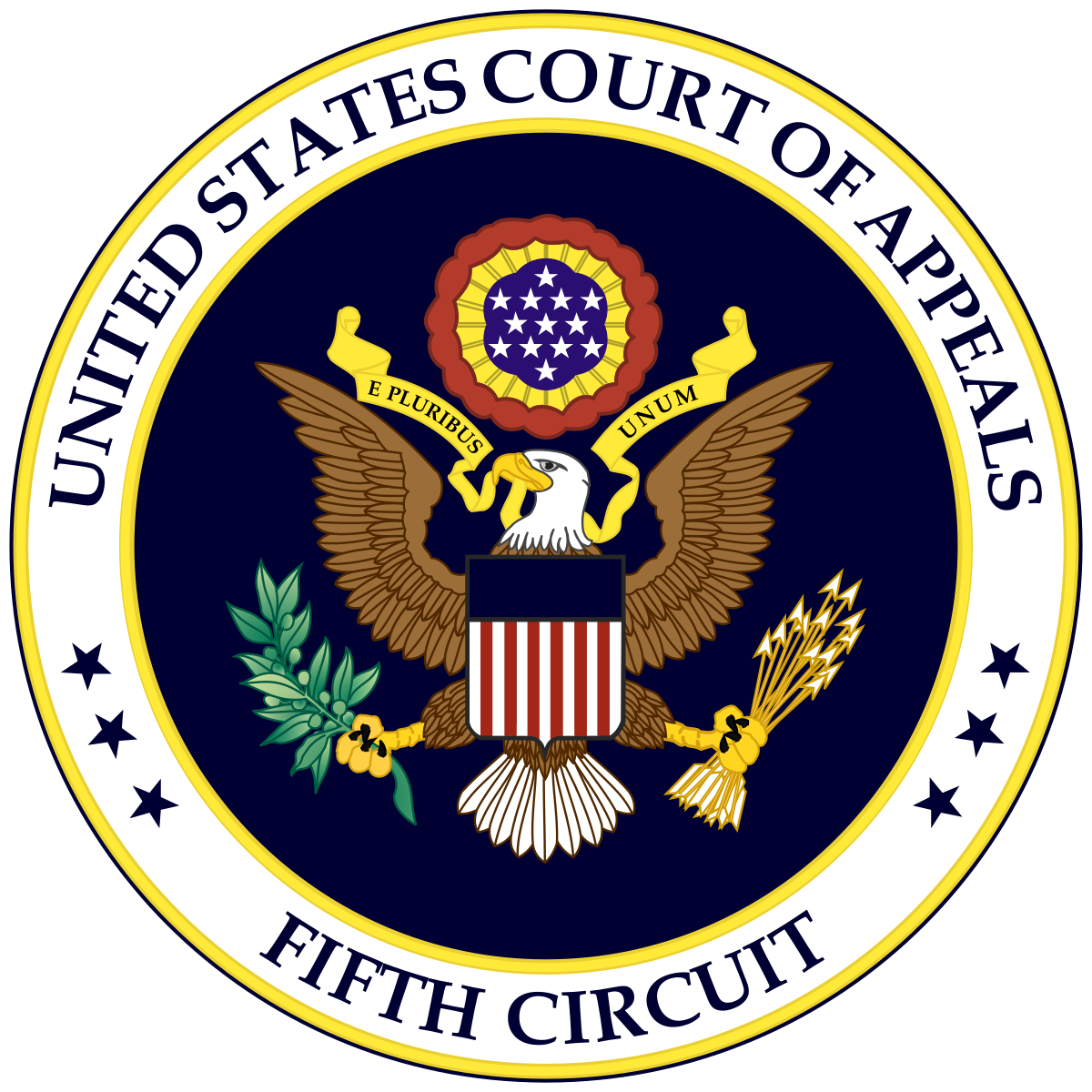
The opinion of a three-judge panel (Jones, Duncan and Engelhardt) of the United States Court of Appeals for the Fifth Circuit (New Orleans) was short and to the point:
“Before the court is the petitioners’ (fan omitted) emergency motion to stay enforcement of the Occupational Safety and Health Administration’s November 5, 2021 Emergency Temporary Standard (fn omitted) (the “Mandate”) pending expedited judicial review. Because the petitions give cause to believe there are grave statutory and constitutional issues with the Mandate, the Mandate is hereby STAYED pending further action by this court.”
The Panel put the parties on a short time leash by also ordering the following expedited filing timeline:
“The Government shall respond to the petitioners’ motion for a permanent injunction by 5:00 PM on Monday, November 8. The petitioners shall file any reply by 5:00 PM on Tuesday, November 9.”
The Court did not state on what date it would issue its opinion, but it is clear that the Court means to move VERY quickly (since it put all other work aside and then also worked on a Saturday). Look for a decision as early as this week.
The Fifth Circuit’s Stay technically operates only within the geographical boundaries of the Court’s jurisdiction which encompasses three states (Texas, Louisiana, and Mississippi). Other litigants have threatened lawsuits in other U.S. Court of Appeals jurisdictions, so there is undoubtedly more news to come later this week as the legal feeding frenzy now begins.
Monday, November 8, 2021: OFCCP Published its Draft Proposal to Rescind the Trump OFCCP Religious Exemption Rule, and Not Replace It

OFCCP also published today this Notice of the coming Proposal.
First of all, it is a “Proposal” to rescind, not a Final Rule rescinding the existing OFCCP Rule published in 2020. OFCCP seeks public comments on its Proposal to and through midnight Tuesday December 21, 2021(if indeed OFCCP publishes its Proposal tomorrow, as scheduled).
Second, if the OFCCP does rescind the Rule (and it will: this has become political; not technical), OFCCP “proposes to rescind the regulations in the 2020 rule in their entirety” and does NOT intend to publish a new Rule. Rather, “OFCCP… believes that the 2020 rule is unnecessary and … that no affirmative rulemaking to modify or replace the 2020 rule is needed at this time.” OFCCP’s Proposal is for OFCCP to “…return to its policy and practice of interpreting and applying the religious exemption in section 204(c) of Executive Order 11246, as codified in OFCCP’s regulations at 41 CFR 60-1.5(a)(5), in accordance with Title VII principles and case law. In so doing, OFCCP will abide by relevant religious liberty authorities, including the ministerial exception mandated by the religion clauses of the First Amendment. OFCCP will return to its policy of considering any RFRA claims raised by contractors on a case-by-case basis and refraining from applying any regulatory requirement to a case in which it would violate RFRA. If the 2020 rule is rescinded, nothing in that rule or its preamble could be relied on as a statement of OFCCP’s interpretation or application of the Executive Order 11246 religious exemption or relevant religious liberty authorities.”
How We Got Here
OFCCP’s new Proposal seeks to Rescind the Trump OFCCP December 9, 2020 Final Rule titled “Implementing Legal Requirements Regarding the Equal Opportunity Clause’s Religious Exemption.” We wrote about OFCCP’s Final Rule in a WIR story with this long title: “Monday, December 7, 2021: USDOL Announced A Coming Controversial OFCCP Final Rule Recognizing Expanded Religious Defenses, Even While Only Mirroring the Recent Case Law Which Established Them, Published the Rule Two Days Later, And Then Two Days Later Drew Angry Criticism From House Speaker Pelosi.”
And, you may also recall that Jenny Yang had not been on the job for even 24 hours as OFCCP’s new Director when on Thursday January 21, 2021 community groups supporting female workers, LGBTQ rights, and a union filed two lawsuits in federal District Court in Portland, Oregon to strike down the Trump Final Rule. We reported those lawsuits in this WIR story: “Jenny Yang on the Job For Less Than 24 Hours Before Sued to Stop OFCCP’s Religious Discrimination Final Rule.” That case has been stayed for many months now by the joint stipulation of the Plaintiffs and the Biden Justice Department defending OFCCP. (USDOJ knew, of course, this rescission was coming since Jenny Yang announced her intention to rescind soon after taking office).
OFCCP Has Two Major Objections to the Trump OFCCP Final Rule:
- “Unprecedented Religious Employer Test.” What OFCCP means by that phrase is that “OFCCP also believes that the 2020 rule misstates the law in key respects. Most notably, the 2020 rule creates its own religious employer test, independent of Title VII case law interpreting the identical term. The test adopted in the 2020 rule permits a contractor whose purpose and/or character is not primarily religious to qualify for the Executive Order 11246 religious exemption.
- “Exemption of Unlawful Employment Actions.” What OFCCP means by that phrase is that “… the 2020 rule retreats from the general principle that qualifying religious employers are prohibited from taking employment actions that amount to discrimination on the basis of protected characteristics other than religion, even if the decisions are made for sincerely held religious reasons.” OFCCP is also very upset that the Trump OFCCP Final Rule breathed too much life, for the Biden OFCCP’s taste, into the Religious Freedom Restoration Act (“RFRA”). Chuck Schumer (D-NY) introduced RFRA (with Ted Kennedy (D-MA) in the Senate) and sponsored it through the Congress while a Congressman in the U.S. House of Representatives in 1993 (before he went on to run for the U.S. Senate and became the Senate Majority Leader during the Biden Administration):
“… the preamble to the 2020 rule appeared to promote a categorical approach to the analysis of RFRA claims. OFCCP believes this categorical approach is inappropriate because it extends exemptions more broadly than RFRA requires and fails to allow sufficient flexibility to weigh competing governmental and third-party interests against the interests of individuals asserting religious exemptions.”
What’s this Beef Really All About?
This fight is about one issue: The Biden OFCCP thinks the Trump OFCCP Final Rule will allow for-profit corporations and other institutions which are run for religious purposes or by employers which infuse religious beliefs into their corporate operating rules to trump (no pun intended) the rights of LGBTQ+ applicants and employees. First, the Biden OFCCP thinks the Trump OFCCP Final Rule both “cherry-picked” the Title VII case law favoring religious rights and read those religious rights cases too broadly. Second, the Biden OFCCP thinks the Trump Final Rule inordinately handcuffed the OFCCP to a broad view of the rights of companies to enjoy religious freedoms to the detriment of LGTBQ+ Protected Group members which Executive Order 11246 also protects. (That is why OFCCP does not want to allow any part of the Trump Final Rule to provide ammunition to those companies asserting a religious right in the face of an LGBTQ+ claim, as noted above: “…nothing in that rule or its preamble could be relied on as a statement of OFCCP’s interpretation or application of the Executive Order 11246 religious exemption or relevant religious liberty authorities.”)
So, OFCCP wants to roll back the clock and revert to a “case by case” interpretation of Executive Order/Title VII law and weigh the unique facts of each case so OFCCP may decide the coming “collision of rights” cases (religious freedom right to discriminate vs Executive Order prohibition on discrimination against Protected Groups) in its own fashion reading the Title VII religious rights case decisions more narrowly than did the Trump OFCCP.
“Collision of rights” cases are coming as we reported in last week’s WIR involving a case decision which addressed for the first time almost every legal issue not yet resolved in the federal courts. (See our WIR story Sunday, October 31, 2021: Court Exalts SOME Rights of Private For-Profit Companies Over SOME LGBTQ+ Rights in Religious Freedom Treatise in Latest Collision of Rights Case Decision). There will be many comments filed with OFCCP in the next thirty days in response to its Proposal to Rescind, and likely calls for an extension of time to comment beyond early December. Both protected groups squaring off are passionate about their rights, and OFCCP and the Courts are caught squarely in the middle of those competing claims as of yet to be finally and firmly decided.
THIS COLUMN IS MEANT TO ASSIST IN A GENERAL UNDERSTANDING OF THE CURRENT LAW AND PRACTICE RELATING TO OFCCP. IT IS NOT TO BE REGARDED AS LEGAL ADVICE. COMPANIES OR INDIVIDUALS WITH PARTICULAR QUESTIONS SHOULD SEEK ADVICE OF COUNSEL.
SUBSCRIBE.
Compliance Alerts
Compliance Tips
Week In Review (WIR)
Subscribe to receive alerts, news and updates on all things related to OFCCP compliance as it applies to federal contractors.
OFCCP Compliance Text Alerts
Get OFCCP compliance alerts on your cell phone. Text the word compliance to 55678 and confirm your subscription. Provider message and data rates may apply.



